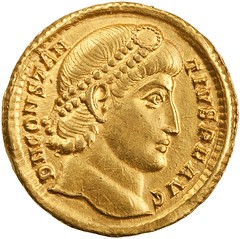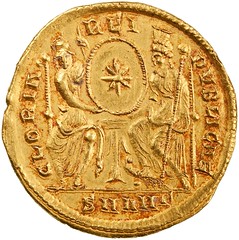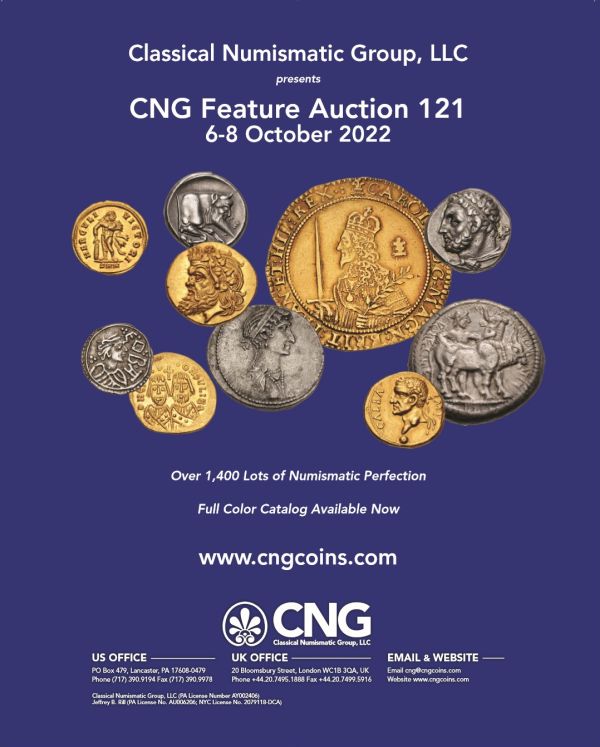
PREV ARTICLE
NEXT ARTICLE
FULL ISSUE
PREV FULL ISSUE
V25 2022 INDEX E-SYLUM ARCHIVE EMPEROR JULIAN : ARTIFACTS OF APOSTASYAustin Andrews of the American Numismatic Society published a Pocket Change article about the Roman emperor Julian. Here's an excerpt - see the complete article online for much more. -Editor
Historians and poets alike have all had their say about the quirks of the personality, reign, and life of the Roman emperor Julian (331–363 CE). To the late eighteenth-century historian Edward Gibbon, in his much-cited Decline and Fall of the Roman Empire, Julian was a doomed tragic hero; to the early twentieth-century poet C. P. Cavafy, he was snide, sharp, and cowardly; today, many contemporary scholars note how Julian snubbed what he saw as newfangled Only a few decades prior to Julian's reign, his uncle, the emperor Constantine, adapted and legitimized Christianity on an imperial scale. In the wake of the succession hostilities that played out after Constantine's death, Julian came to power as one of the few survivors from his generation of the imperial family. Yet the Roman Empire, in the form of what historians retroactively call the Byzantine Empire, continued for another thousand years after Constantine's leadership. All of its subsequent emperors, at least in name, called themselves Christians after his example—with only one exception: Julian. His most famous coins are bronzes, which feature his bearded face on the obverse and an astral bull on the reverse (ANS 1944.100.22722, above). These are notable because, with the hindsight of history, they represent who Julian is as a historical figure most succinctly: a blip in a millennium of continuity. As he reached adulthood, Julian had to present public reverence to the status quo and especially to his cousin Constantius, the reigning Augustus, or senior Roman emperor. This façade of goodwill manifested in Julian composing and delivering panegyrics—uncritical glorifying speeches—in honor of Constantius, as well as through presenting shared language and imagery on money and other media. Constantius was typically depicted on coins in the classic Constantinian style as on the solidus above: martially clean-shaven, his hair in a mullet with forward-combed bangs, and his head crowned with a pearly diadem (ANS 1944.100.22356). When Julian served as Caesar, or deputy emperor, under Constantius, his portraiture is nearly indistinguishable from that of the reigning Augustus without the diadem (e.g. ANS 1944.100.22357, below). At the behest of legionary soldiers in the province of Gaul, however, Julian eventually accepted the title of Augustus for himself. But before civil war began, Constantius died in the winter of 361 CE, naming Julian his successor.
At this point, Julian formally broke from Christianity. In private, he had not considered himself to be a Christian—or a
To read the complete article, see:
Wayne Homren, Editor The Numismatic Bibliomania Society is a non-profit organization promoting numismatic literature. See our web site at coinbooks.org. To submit items for publication in The E-Sylum, write to the Editor at this address: whomren@gmail.com To subscribe go to: https://my.binhost.com/lists/listinfo/esylum All Rights Reserved. NBS Home Page Contact the NBS webmaster 
|






